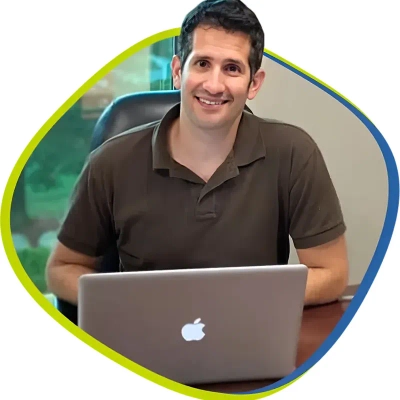6 Ways to Bridge the Gap Between Theoretical Linguistics and Practical NLP Applications
Bridging the gap between theoretical linguistics and practical NLP applications requires thoughtful approaches grounded in both disciplines. This article presents six effective strategies, featuring insights from leading experts who have successfully connected linguistic theory with computational implementation. These methods offer clear pathways for professionals seeking to transform complex linguistic frameworks into functional NLP systems that solve real-world problems.
Transforming Linguistic Theory into Computational Models
Bridging theoretical linguistics and practical NLP applications has been core to my work. I focus on transforming linguistic insights about syntax, semantics, and pragmatics into computational models that effectively process human language. My approach typically involves taking established linguistic theories—like phrase structure rules or discourse analysis frameworks—and mapping them to algorithmic structures. This helps our NLP systems better grasp context, ambiguity, and deeper meaning beyond just surface text patterns.
One particularly challenging translation involved developing a conversational AI that could recognize and generate contextually appropriate idiomatic expressions. While linguistics gives us detailed descriptions of idioms, their cultural and pragmatic nuances are subtle, variable, and heavily context-dependent. To implement these nuances, we combined corpus-based frequency analysis with semantic role labeling to predict when and how an idiom would naturally fit in conversation.
The real challenge was preventing the system from overgeneralizing or misapplying expressions in contexts where they'd sound unnatural. Through repeated testing and refinement, we successfully aligned theoretical linguistic insights with machine learning models. The result was an NLP application producing more fluent, human-like language. This project reinforced how important it is to ground computational models in linguistic theory while remaining flexible to what real-world language use shows us.

Integrate Linguistic Theories into Machine Learning
Modern machine learning frameworks can benefit greatly from the integration of linguistic theories. These frameworks often rely on statistical patterns without deeper understanding of language structure and rules. Linguistic theories provide valuable insights about syntax, semantics, and pragmatics that can enhance the performance of NLP models. By embedding these theories directly into neural architectures, developers can create systems that not only recognize patterns but understand why those patterns exist.
This integration helps address common NLP challenges like ambiguity resolution and contextual understanding that pure statistical approaches struggle with. Researchers should prioritize building hybrid systems that leverage the strengths of both data-driven approaches and theoretical linguistics. Start incorporating linguistic principles into your machine learning pipelines today to develop more robust and interpretable NLP applications.
Create Cross-Disciplinary Educational Programs
Cross-disciplinary educational programs represent a crucial step toward bridging the gap between linguistics theory and NLP applications. Currently, many computer scientists lack formal training in linguistic principles, while linguists often have limited exposure to computational methods. Universities should develop specialized curricula that combine coursework from both fields to train a new generation of professionals with dual expertise. These programs could include practical workshops where linguists and engineers collaborate on solving real-world language problems using both theoretical insights and computational tools.
The resulting hybrid professionals would serve as natural bridges between the academic linguistic community and industry NLP practitioners. Education institutions must recognize this training gap and respond by creating innovative degree programs that blend these disciplines. Begin advocating for integrated linguistics-computer science programs at your institution to prepare students for the future of language technology.
Design Metrics to Evaluate Linguistic Accuracy
Evaluation metrics focused on linguistic accuracy would provide valuable feedback for NLP system developers. Current benchmarks often emphasize overall performance without examining whether systems correctly handle specific linguistic phenomena like anaphora resolution or pragmatic inference. New metrics could evaluate how well systems align with linguistic understanding of language rather than just statistical correlation with training data.
These specialized evaluations would highlight areas where incorporating theoretical insights could improve practical applications. Developing such metrics requires input from both linguists who understand the phenomena and engineers who know the technical constraints. Encourage the adoption of linguistically-informed evaluation approaches to guide the development of more sophisticated language processing systems.
Develop Repositories Linking Theory to Application
Shared resources mapping linguistic theories to practical applications would significantly benefit both researchers and developers. Currently, valuable linguistic insights often remain trapped in academic papers without clear paths to implementation in NLP systems. A comprehensive repository connecting specific theories to potential applications would help engineers understand which linguistic frameworks might solve their particular challenges. This resource could include code examples, case studies, and benchmarks showing how theoretical concepts translate to performance improvements in real systems.
Such a knowledge base would grow over time as the community contributes new findings and implementation strategies. Organizations should invest in developing and maintaining these shared resources as a public good for the language technology community. Join efforts to build a centralized knowledge base that connects linguistic theory to practical NLP applications for the benefit of all practitioners.
Build Platforms for Linguist-Engineer Collaboration
Collaborative research platforms bring together theoretical linguists and NLP engineers in structured environments designed for productive exchange. These platforms could host regular challenges where linguists propose theories and engineers implement them, measuring practical outcomes against traditional approaches. Joint workshops and hackathons focused on specific language problems would foster relationships between professionals who rarely interact despite working on similar issues.
The resulting collaborations could lead to breakthrough applications that neither group would develop independently. These platforms should include tools for documenting successes and failures to build an evidence base about which theories translate effectively to practical applications. Support the development of dedicated collaboration spaces where linguists and NLP engineers can work together on solving complex language problems.

